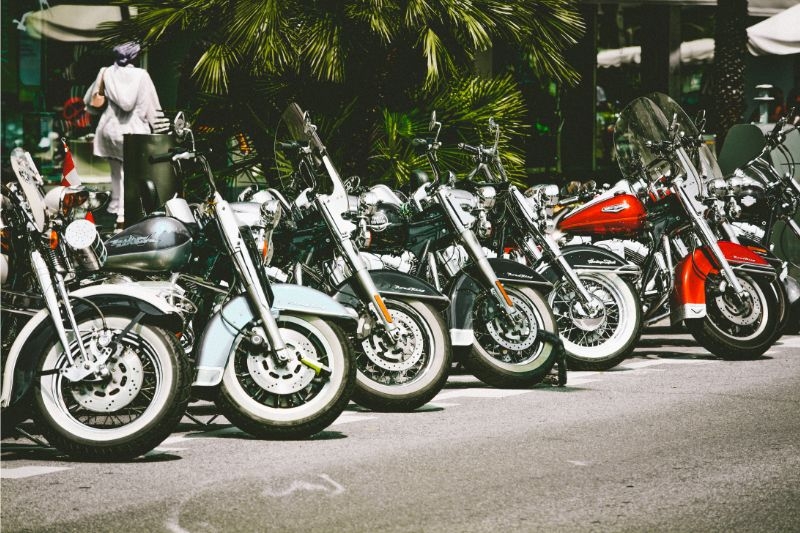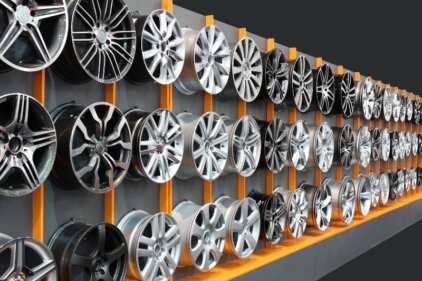Motorcycles have captivated the hearts of enthusiasts for over a century, embodying freedom, style, and exhilaration. The process behind motorcycle production is a fascinating journey that has evolved significantly over the years. From the early days of motorized bicycles to the sleek and powerful machines we see today, understanding the distinctions in motorcycle production is key to appreciating the artistry and engineering that goes into crafting these two-wheeled marvels.
The early years: Evolution of motorcycle production
The roots of motorcycle production can be traced back to the late 19th century. In the early years, motorcycles were essentially bicycles with attached engines. It was a period of experimentation and innovation, with inventors and engineers striving to create a reliable and efficient mode of transportation. Manufacturers such as Indian, Harley-Davidson, and Triumph emerged during this era, laying the foundation for the future of motorcycle production.
As the years progressed, advancements in technology and engineering led to the development of more sophisticated motorcycles. The introduction of features like electric starters, suspension systems, and improved engines revolutionized the riding experience. Manufacturers began to focus on enhancing performance, comfort, and safety, resulting in the birth of iconic models such as the Harley-Davidson Knucklehead and the Triumph Bonneville.
Key milestones in motorcycle production history
The history of motorcycle production is marked by several key milestones that have shaped the industry. One significant milestone was the introduction of mass production techniques, pioneered by companies like Honda and Yamaha. This allowed motorcycles to be produced at a larger scale, making them more accessible to the general public.
Another pivotal moment was the introduction of the first superbike, the Honda CB750, in the late 1960s. This groundbreaking model set new standards for power, performance, and reliability, inspiring a new generation of motorcycles.
The 1980s witnessed the rise of sportbikes, with manufacturers like Suzuki, Kawasaki, and Yamaha pushing the boundaries of speed and agility. These sleek and aerodynamic machines became synonymous with adrenaline-fueled racing and captured the imagination of motorcycle enthusiasts worldwide.
Changes in motorcycle design and technology
Over the years, motorcycle design and technology have undergone significant changes, reflecting the evolving tastes and preferences of riders. Advances in aerodynamics have led to the development of streamlined fairings, reducing wind resistance and improving stability at high speeds.
In terms of technology, motorcycles have embraced electronic fuel injection systems, advanced ABS braking systems, and traction control, enhancing both performance and safety. Additionally, the integration of GPS navigation systems and Bluetooth connectivity has made motorcycles more convenient and user-friendly.
The influence of motorcycle racing on production models
Motorcycle racing has always been a driving force behind the development and improvement of production models. The competitive nature of racing pushes manufacturers to constantly innovate and refine their motorcycles. Technologies and techniques developed on the racetrack often find their way into production models, resulting in improved performance and handling.
For example, the introduction of high-performance suspension systems and lightweight materials can be attributed to the demands of racing. The quest for speed and agility on the track has led to the development of street-legal motorcycles that offer exhilarating performance and precision handling.
The rise of customization and aftermarket parts
In recent years, there has been a surge in motorcycle customization and the popularity of aftermarket parts. Riders are increasingly seeking to personalize their motorcycles, transforming them into unique expressions of style and individuality. This trend has given rise to a thriving industry of custom bike builders, aftermarket parts manufacturers, and accessories designers.
From custom paint jobs and modified exhaust systems to unique handlebars and seating options, the possibilities for customization are endless. This trend not only allows riders to make their motorcycles one-of-a-kind but also fosters a sense of community and camaraderie among fellow enthusiasts.
Current trends in motorcycle production
In the current landscape of motorcycle production, several trends are shaping the industry. One prominent trend is the growing demand for electric motorcycles. With advancements in battery technology and increasing environmental concerns, manufacturers are investing in the development of electric-powered motorcycles that offer a sustainable and eco-friendly alternative.
Another trend is the integration of smart technology into motorcycles. From touchscreens and voice command systems to adaptive cruise control and collision detection, motorcycles are becoming increasingly connected and tech-savvy.
The future of motorcycle production
As we look to the future, the world of motorcycle production is poised for exciting advancements. With the rise of electric motorcycles, we can expect to see further improvements in battery range and charging infrastructure. Additionally, advancements in autonomous vehicle technology may lead to the development of self-driving motorcycles, revolutionizing the way we ride.
Furthermore, the integration of artificial intelligence and predictive analytics may enhance rider safety by providing real-time warnings and assistance systems. These technological advancements are likely to coexist with the timeless appeal of traditional motorcycles, offering riders a wide range of options to suit their preferences and needs.
Collecting and restoring vintage motorcycles
For enthusiasts and collectors, vintage motorcycles hold a special allure. Owning and restoring these classic machines allows individuals to connect with the rich history and craftsmanship of motorcycle production. From meticulously sourcing original parts to reviving engines and repainting frames, the process of restoring a vintage motorcycle requires patience, skill, and a deep appreciation for the past.
Collecting vintage motorcycles not only preserves a piece of motorcycle history but also provides a tangible link to the pioneers and visionaries who shaped the industry. It is a way to honor the legacy of those who came before us and to share the stories and experiences that define the evolution of motorcycle production.
Conclusion
Decoding the evolution of motorcycle production unveils a captivating journey of innovation, design, and passion. From the humble beginnings of motorized bicycles to the cutting-edge machines of today, motorcycles have come a long way. The distinctions in motorcycle production across the years reflect the tireless pursuit of excellence by manufacturers and the unwavering enthusiasm of riders.
As we embrace the future of motorcycle production, it is important to remember and appreciate the milestones and advancements that have shaped the industry. Whether it is the influence of racing, the rise of customization, or the integration of technology, each chapter in the story of motorcycle production has contributed to the rich tapestry that is the world of motorcycles.
So, the next time you hop on your motorcycle and feel the wind in your face, take a moment to reflect on the legacy and evolution that has brought you to this exhilarating point in time. Embrace the distinctions in motorcycle production and revel in the passion and artistry that continues to fuel the industry. Ride on and create your own chapter in the ever-evolving story of motorcycles.





